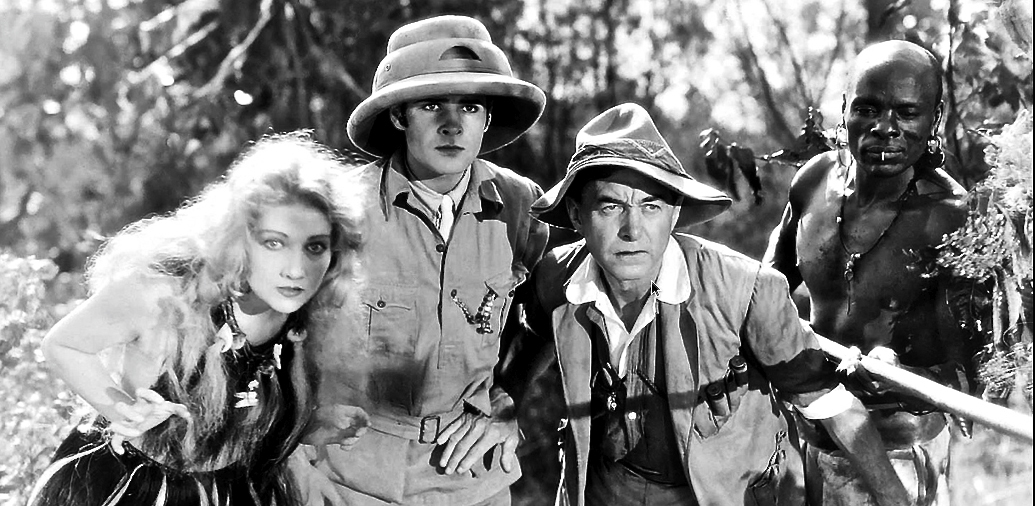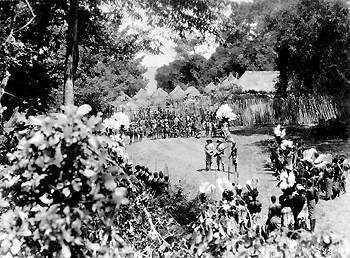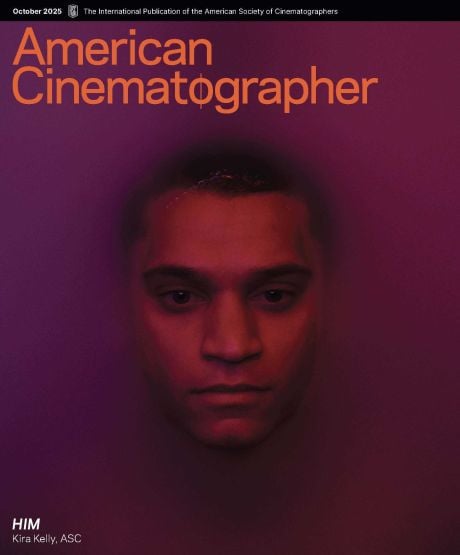
Wrap Shot: Trader Horn
Behind the scenes of the iconic 1931 adventure film, shot on location in Africa.
Extended location trips provide filmmakers with an attractive escape from the studio-bound routine. Often, however, such forays offer too many problems and discomforts to allow for much pleasure, and occasionally, they even become sheer hell for everyone involved. Take, for instance, MGM's wonderful Trader Horn, most of which was shot in Africa between March 1929 and December 1930. The film tells the supposedly true tale of a grizzled river trader and a friend who face many dangers from wild animals and hostile tribes during their quest for a mysterious "white goddess."
Principal location photography occurred in an area then comprising the Territory of Tanganyika, the Protectorate of Uganda, the Colony of Kenya, the Anglo-Egyptian Sudan, and the Belgian Congo. An on-screen statement by director W. S. Van Dyke II extols the "courageous and efficient services of the white hunters, Maj. W.V.D. Dickenson, A.S. Waller, Esq.; J.H. Barnes, Esq.; H.R. Stanton, Esq., who were chiefly responsible for the expedition's ability to traverse 14,000 miles of African veldt and jungle."

Problems included malaria contracted by Van Dyke and many of the crew, crocodiles which reportedly killed a bearer, a variety of tropical fevers, sunstroke, dysentery, tse tse flies, ants, an angry rhinoceros which reportedly killed another bearer and nearly got Van Dyke and Dickenson as well. A tense romantic rivalry ensued between Van Dyke and his favorite cinematographer, Clyde de Vinna, ASC, over the script clerk, Josephine Chippo. A liaison between romantic lead Duncan Renaldo and "goddess" Edwina Booth led to a divorce, a scandal and an alienation of affections suit. Upon returning stateside, Renaldo received a two-year prison term as an alleged illegal alien, but was later pardoned by President Roosevelt. Star Harry Carey angered MGM chief Louis B. Mayer when he requested more money for the sound retakes at the studio, and found himself working for Mascot and Ajax for several years. Booth appeared with Carey in two serials, then went into seclusion for many years.
Carey and Renaldo eventually salvaged their careers. Van Dyke, despite occasional malaria attacks, pursued his notable directorial career into the 1940s. De Vinna who had his reports from Africa serialized in American Cinematographer (see July 1929 and Jan. ’30) continued to enjoy a long and distinguished career as a top cinematographer. His numerous credits include Ben Hur (1926, with Karl Struss, ASC), Bird of Paradise, and White Shadows in the South Seas (with help from Robert Flaherty), which earned de Vinna an Academy Award for Best Cinematography in 1930.






